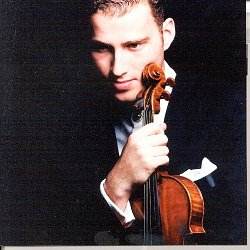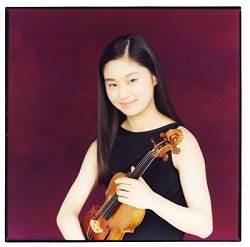Christopher Thomas and Len Mullenger in Birmingham.
It is a great shame that Symphony Hall only appeared a little over half-full for this Sunday evening all Brahms concert, for the Baltimore Symphony treated us to a programme that immediately captured attention in the care, thoughtfulness and attention to detail of their performance.
Yuri Temirkanov has just entered his second season as the Baltimore’s Music Director. He conducted the entire programme without a baton, cutting an elegant, dapper figure, a man of modest gesture never prone to over statement or dramatic effect in his technique. That said, the rapt response he received from the players of the Baltimore Symphony communicated itself immediately in the opening Academic Festival Overture. There was a sense of infectious spirit in the playing here that was not always as evident later in the concert, with some delightfully delicate wind playing and a finely balanced, warm sounding string section. With the exception of a couple of moments of slight uncertainty in the ensemble, the orchestra gave an indication of the carefully contoured phrasing and finely graded textures that were to mark the performance of the Symphony No. 2 in the second half.
I suspect that the name of Nikolaj Znaider would have been new to many people in the audience. I also have a strong hunch that after this performance of the Brahms Concerto he will have made himself many new friends, as much for his on stage personality and extraordinary response to a crisis in the finale as for his playing. After a deftly handled orchestral introduction, Znaider’s first entry amply demonstrated the charisma evident in his playing as well as in his presence. Back arched, the physical commitment and integrity of his playing impressed immediately. Where doubts surfaced to my ears were in his tone. In the rhapsodic, lyrical material that Brahms so magically weaves into the more dramatic passages of the movement Znaider made his 1732 Guarneri sing with a sound of sweet, crystal clear purity. In his lower register however, coupled with the more muscular passages, I felt a lack of depth to his tone inhibited the overall effect of the performance, this despite the heart and soul that was clearly going into his playing. In the central adagio, this was not a concern and I found myself enthralled as, clearly, were the audience, at the beauty and sensitivity of his playing allied with the meticulously handled orchestral accompaniment (the gorgeous opening oboe solo was particularly memorable). The final movement was overshadowed somewhat by a broken string around two minutes in. After an initial audible exclamation from the soloist he calmly turned to the leader, swapped instruments and carried on playing, unfazed, as the leader fitted a new string before swapping instruments back a couple of minutes later. Incredibly, the incident had little effect on Znaider who proceeded to bring the concerto to an exciting conclusion followed by numerous embraces with both Temirkanov and the leader. I attended this concert with high expectations of Znaider, who, at twenty-five years of age, has a strong musical personality. He may have some way to go yet before he reaches full maturity but I suspect we will hear much more of him.
The symphony almost felt like an anti-climax after the drama of the concerto but it soon became clear that the playing was to reflect the same careful preparation that had characterised the playing in both the overture and concerto. I would emphasise the word careful here as the unquestionable beauty of phrasing and delicately balanced sounds may, for some, have got in the way of the spirit of the music, particularly in the finale, which did not quite blaze as I would have liked it to. There was plenty to enjoy however, the charmingly poignant concluding coda of the first movement, the "autumnal glow" (to quote Janet E. Bedell ‘s programme note) of the Baltimore’s sound, always refined and never forced and the grace and rhythmic nuances of the intermezzo. Much of the solo playing was delightfully done and despite the restraint of the performance it left a warm feeling on an otherwise cold November night. Curiously, though I left Symphony Hall with the impression that I may have felt rather differently about the orchestra had they been giving an all-twentieth century programme.
Christopher Thomas
.................................................
Marc Bridle in London.
This was a very sparsely attended concert, no doubt due to the programme of all Brahms. It also left something of a mixed impression for this reviewer.
The Baltimore Symphony Orchestra are near the top flight of American orchestras yet they lack the definition of character in their playing which makes hearing the Cleveland or New York Philharmonic such a riveting experience. The string sound is bold (at least to the right of the orchestra), although I found the violins somewhat emaciated in tone during the opening overture (a plain, non-fussy performance). Pitch was not always perfect, and there is a steely bite to the upper strings which, even given the improved acoustics of the Barbican, didn’t quite project sufficient sonority for those sat at the back of the stalls.
Sayaka Shoji was the London replacement for the indisposed Pamela Frank in Brahms’ Violin Concerto. I never tire of hearing this work, but did during this performance. Shoji, just 18 years of age, has a fine (but only fine) technique but was, frankly, unwise to have chosen this concerto to play. The Brahms (in some ways the cruellest of the great concertos for a soloist) requires both stamina and an innate ability to enter into artistic dialogue with the orchestra, and Shoji was short on both. Her very first entry, on an open D string ascending towards a high F, lacked security and the octave leaps during the first movement’s development were poorly articulated (more to do with her small finger span than any inability to hit the notes). However, matters improved significantly during the second movement when her tone appeared more expressive (although both she and the Baltimore’s oboist appeared a world apart in communicating with each other). The finale had drive, but lacked authentic gypsy feel, even if she had by this time mastered the double stops and trills which litter the movement.
The performance of Brahms’ Second Symphony started with a laboured gait, and only really sprung into action during the blazing finale of the Allegro con spirito. However, the orchestral playing picked up markedly – indeed, the growling cellos were truly world class, their phrasing and colour beguiling. Temirkanov, the unshowiest of conductors, coaxed an organic performance out of the Baltimore players which at last made this orchestra worth hearing.
I hope that the Baltimore will return to London in the future – this time however with a much more enticing programme. It was unfortunate, that in London of all places on their tour, they seemed unwilling to play a major American work.
Marc Bridle


 Return to:
Return to: